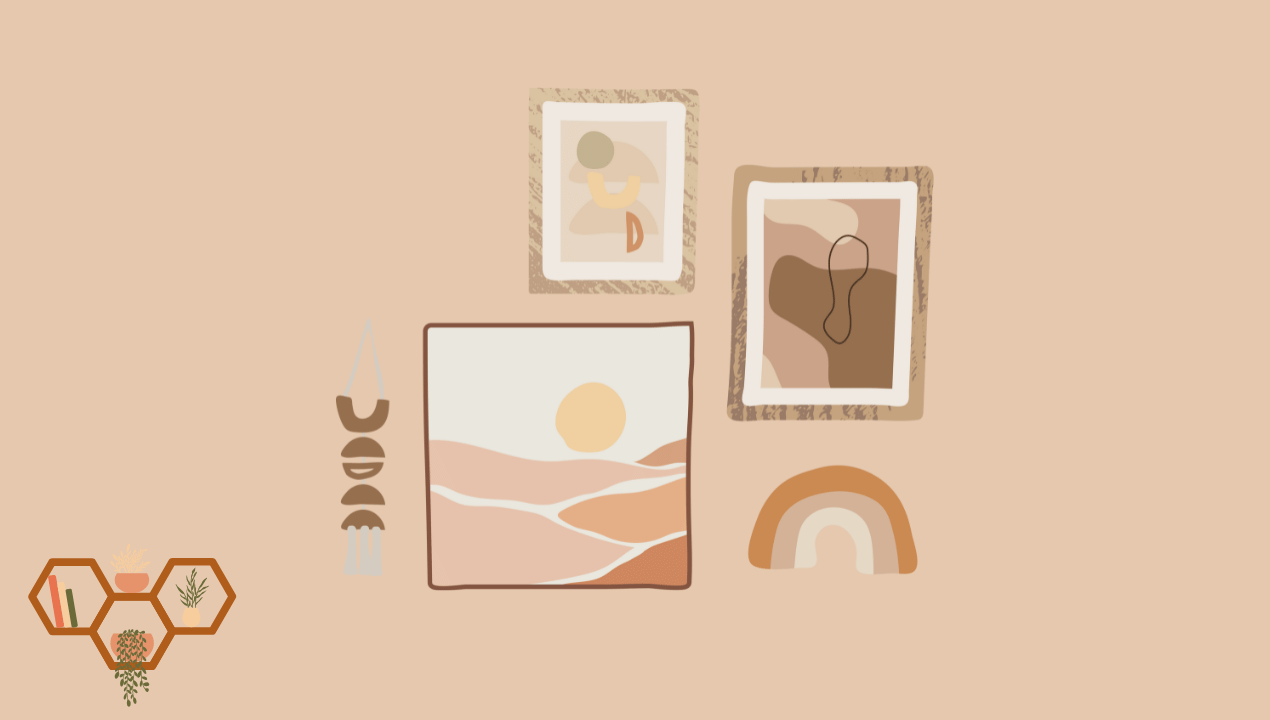Choosing a decor style shapes how your rooms feel, how you live, and what stories your home tells. Two of the most influential looks today are maximalism and minimalism. Both can be beautiful, practical, and personal. They take you in opposite directions, which is why the best choice starts with your lifestyle and the rooms you use most. This guide breaks down the core ideas, gives you a quick comparison table, and shows you how to test each style at home before you commit. In this article, we’ll explore the maximalism vs. minimalism and discover which decor trend is right for your home, like the ones in CetArt Canvas Prints.
What Defines Minimalism At Home Decor Trend
Minimalism favors calm, clarity, and negative space. Lines stay clean, surfaces stay open, and everything has a purpose. The palette leans neutral or tonal, often with one accent color that repeats from room to room. Think soft whites, warm beiges, natural woods, and quiet textures. Storage is planned, clutter is edited, and decor pieces work like punctuation, not paragraphs. A minimalist living room might have a low profile sofa, a simple rug with subtle texture, one large piece of art, and a single sculptural lamp. The room feels airy and focused. You can exhale as soon as you step in.
What Defines Maximalism At Home
Maximalism embraces layers, color, and collections. It is not about mess. It is about intention and personality. The palette is richer, the patterns are bolder, and the accessories tell a story. You might see vintage finds next to contemporary pieces, books stacked with care, and gallery walls that mix frames, sizes, and media. A maximalist living room might feature a jewel tone sofa, patterned curtains, layered rugs, and multiple art groupings. The room feels energetic and expressive. You notice something new every time you look around.
A Quick Comparison You Can Use
| Category | Minimalism | Maximalism | What To Consider |
|---|---|---|---|
| Color And Pattern | Neutral base, limited accents, simple patterns | Saturated hues, mixed patterns, visual rhythm | Your comfort with bold color and busy motifs |
| Furniture | Fewer pieces, clean silhouettes, hidden storage | Statement pieces, varied silhouettes, open shelving | Room size and traffic flow |
| Decor And Art | One or two large focal pieces | Gallery walls, layered objects, collected art | Dusting time and styling patience |
| Maintenance | Faster cleaning, fewer surfaces | More frequent dusting, more fabric care | Time available for upkeep |
| Mood | Calm, spacious, restful | Vibrant, cozy, stimulating | Your energy level and how you relax |
| Budget Strategy | Invest in quality basics, buy less | Mix high and low, thrifted finds, seasonal refresh | Your willingness to hunt and edit |
| Best For | Small spaces, busy schedules, lovers of quiet | Large rooms, creative spirits, collectors | Your personality and daily routine |
How To Test Each Style Before You Commit: Home Decor Trend
Testing saves time and money. Start with one room and a seven day trial.
For minimalism, remove half the accessories, clear surfaces, and store extras. Use one large artwork instead of several small pieces. Fold blankets and hide remotes in a drawer. Live with the room for a week and note how you feel. Pay attention to morning light, evening relaxation, and how easy it is to tidy up.
For maximalism, add layers thoughtfully. Bring in a patterned throw, swap plain pillows for textured or printed versions, and build a small gallery wall above the sofa. Group decor by color or theme on shelves. Add a bold lamp or a vintage side table. Live with the room for a week and note your mood, your creativity, and how guests react.
The Role Of Wall Art In Both Styles
Wall art is the quickest way to set a room’s tone. Minimalist rooms benefit from one large scale piece that anchors the space and reduces visual noise. Maximalist rooms thrive with curated groupings that create movement and conversation. Measure your walls, think about sight lines, and start with the area you see first when you enter the room. Hang art at eye level for most viewers, and center larger pieces above key furniture like sofas and beds.
Here is a practical tip you can use today. Choose a focal wall and map the artwork size with masking tape. For minimalist rooms, pick a single large canvas that spans roughly two thirds of the sofa width. For maximalist rooms, plan a grid or salon style gallery of mixed sizes that fills the vertical space and stops a few inches from ceiling lines. If you want an easy upgrade with consistent print quality and simple installation, browse ready-to-hang canvas prints from CetArt Canvas Prints that suit your palette and theme. Large formats instantly define the style and create a professional finish.
Minimalism Styling Playbook
Edit first, then style. Start with the floor plan. Pull furniture off the walls to create better flow and conversation zones. Use a neutral rug that fits the seating area. Plan lighting in three layers. Ambient overhead, task for reading, accent for atmosphere. Limit decor to a few sculptural pieces. So, a ceramic vase, a carved wood bowl, a textured throw. Repeat materials to create harmony. If you add color, echo it in at least three places in small doses. The art, a cushion, a book spine. This keeps the room cohesive without clutter.
Storage is the secret to minimalist success. Closed media units, storage ottomans, and nightstands with drawers prevent daily items from taking over. Cord management keeps sight lines clean. Plants work beautifully with minimal spaces. Choose one or two larger plants instead of many small ones. This preserves the calm while adding life and texture.
Maximalism Styling Playbook: Home Decor Trend
Curate, do not accumulate. Pick a base palette, then layer secondary colors. Use pattern families that talk to each other. Florals with stripes, geometric with organic, small repeats with large prints. Anchor the room with one or two large rugs, then build up with pillows and throws. Books belong in maximalist rooms. Sort by color, author, or theme, then add personal objects on top. Candles, travel souvenirs, framed photos, and small sculptures tell your story.
Gallery walls are a maximalist signature. Mix frames and media. Combine paintings, photography, sketches, and textiles. Keep a common thread such as a color family or subject. Start with the largest piece as your anchor and build outward. Leave consistent spacing for a polished look. Vary heights to create movement. Add picture lights for a warm glow at night. The goal is richness without chaos, personality without clutter.
Small Space Considerations Maximalism vs. Minimalism
Small rooms can handle either style with a few adjustments. Minimalism gives you breathing room by using fewer pieces with larger scale. Choose a sofa with exposed legs, a glass coffee table, and a tall floor lamp to pull the eye upward. Moreover, mirrors help bounce light and make the space feel open.
Maximalism in a small room benefits from a strong base color on walls. Deep greens, warm terracottas, or smoky blues make collections feel intentional. Use vertical shelving to display grouped objects, not random bits. Keep circulation clear. If floor space is tight, mount art higher to lead the eye and use wall lights that free up tabletops.
Budget Friendly Ways To Try Both Looks
Shop your home first. For minimalism, remove extras and see what remains. A free decor refresh often appears when you edit. For maximalism, gather items with shared color or story and display them together for impact. Thrift stores and estate sales are great for frames, lamps, and side tables. Spend more on key items that get daily use. Sofas, mattresses, dining chairs. Finally, spend less on accents that you can rotate seasonally.
You can also DIY simple art. A large canvas with a soft gradient or a hand painted shape creates a modern statement for a minimalist room. For maximalist rooms, frame fabric swatches or vintage posters. So, mix in family photos with consistent printing and mats for a collected yet cohesive look.
Maximalism vs. Minimalism: Cleaning And Maintenance Realities Home Decor Trend
Minimalism reduces cleaning time. Fewer objects mean faster dusting and quicker resets after busy days. Routine matters. Five minutes every evening to put items back in place keeps the look strong.
Maximalism takes more care. Plan a monthly dusting routine for shelves and frames. Use washable slipcovers for sofas and pillows if you love rotating fabrics. Keep glass cleaner and microfiber cloths in a nearby drawer so touch ups are easy. The maintenance is worth it if the room makes you feel energized and inspired.
How To Decide Which Style Fits You
Think about how you want to feel in your home. If you crave calm and easy upkeep, minimalism will likely feel right. If you feel most alive around color, books, art, and layered textures, maximalism will feel like home. Many people live between both. A minimalist kitchen with clean counters and hidden storage, a maximalist living room with a gallery wall and patterned drapery, a minimalist bedroom for rest and recovery. Mix the approaches by room function and energy.
A Simple Roadmap For Your Next Weekend: Maximalism vs. Minimalism
Pick one room. Choose your maximalism vs. minimalism style for the trial. Set a timer for ninety minutes. Edit and rearrange, then finalize art placement with intention. Take before photos, live with the changes for a week, and take after photos. Share the results with a friend whose taste you trust. Adjust what does not feel right, then commit to the pieces that made the biggest difference.
Your home is a living system. Let it evolve as you do. Minimalism and maximalism are not rigid rules. They are design languages you can learn and speak in your own voice.








